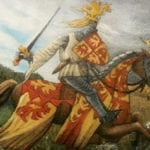 Weird Stuff
Weird Stuff  Weird Stuff
Weird Stuff  History
History 10 Legends Whose Last Moments Undid Their Glory
 Health
Health 10 Futuristic Ideas to Treat Common Medical Problems
 Weird Stuff
Weird Stuff Ten Surreal Attempts to Reverse Baldness
 Facts
Facts 10 U.S. Government Contingency Plans for the Unthinkable
 History
History 10 Weird Distractions from the Great Depression
 Movies and TV
Movies and TV 10 Fictional Kings Who Go from Good to Bad
 Food
Food The Fantastic Chemistry Behind Why 10 Popular Foods Taste So Good
 Technology
Technology 10 Futuristic Fungal Technologies
 History
History 10 Not-so-Spooky Events That Also Happened on October 31
 Weird Stuff
Weird Stuff 10 Things So Rare They’ve Only Been Found Once
 History
History 10 Legends Whose Last Moments Undid Their Glory
 Health
Health 10 Futuristic Ideas to Treat Common Medical Problems
Who's Behind Listverse?

Jamie Frater
Head Editor
Jamie founded Listverse due to an insatiable desire to share fascinating, obscure, and bizarre facts. He has been a guest speaker on numerous national radio and television stations and is a five time published author.
More About Us Weird Stuff
Weird Stuff Ten Surreal Attempts to Reverse Baldness
 Facts
Facts 10 U.S. Government Contingency Plans for the Unthinkable
 History
History 10 Weird Distractions from the Great Depression
 Movies and TV
Movies and TV 10 Fictional Kings Who Go from Good to Bad
 Food
Food The Fantastic Chemistry Behind Why 10 Popular Foods Taste So Good
 Technology
Technology 10 Futuristic Fungal Technologies
 History
History 10 Not-so-Spooky Events That Also Happened on October 31
10 Great Romances That Shaped History
History’s pages are often filled with tales of tragedy, loss, and despair. In some cases, though, there is a glimmer of hope in the form of star-crossed lovers who never give up on true love. Kings and queens, emperors and empresses, mistresses, concubines—love does not recognize titles or prefixes. Some love stories are so powerful that they even shaped a nation’s history.
10Pericles And Aspasia
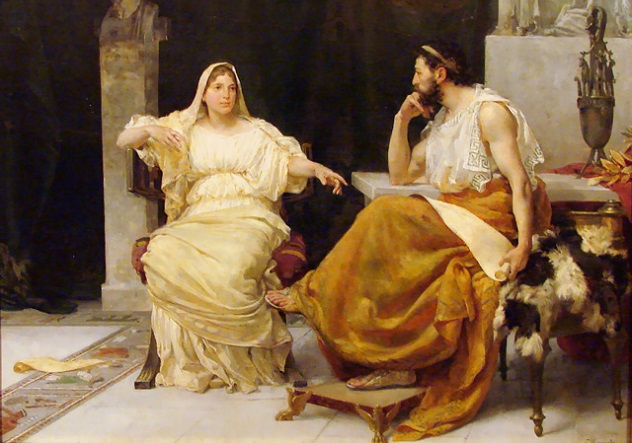
Pericles was a general, orator, and preeminent figure in Athenian statecraft. Perhaps it’s no wonder that his partner shared many of the same talents. The two met during a symposium, and at once, Pericles was smitten by Aspasia’s wit and beauty. Since she came from Miletus, not Athens, she was afforded more freedom than most other women of her time and became known as an intellectual in Athenian society. It was said that the wives of Athens’s most influential men visited her to gain insight and knowledge on domestic matters.
Despite her sophistication, those jealous of Pericles muttered insults and chided their relationship. Aspasia had her fair share of supporters, however, the most prominent of whom was Socrates himself. Though citizens of Athens were forbidden to marry foreigners—a law which was ironically enacted by Pericles before Aspasia came into his life—he adored her for the rest of his days. He was said to have kissed her each day until his death in 429 B.C.
9The Sacred Band Of Thebes
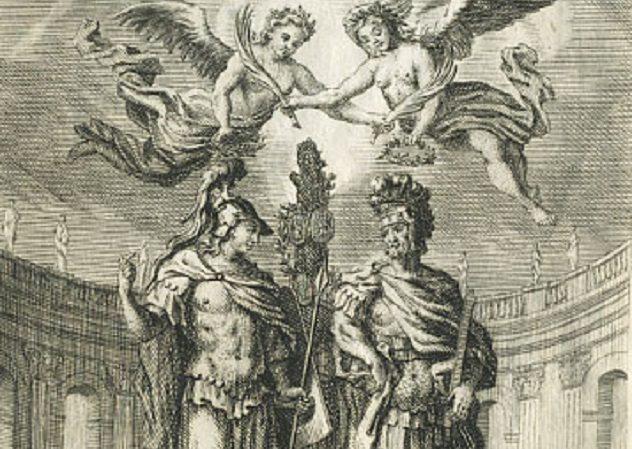
For centuries, Sparta was the dominant military power in ancient Greece. Their rigorous training and battle-hardened discipline made the Spartan phalanx the envy—and downfall—of rival states. However, it only took one slight innovation to finally break the myth of Spartan invincibility.
The land of Thebes lay on the warpath, and what it may have lacked in the lifelong rigidity of the Spartan military, it more than made up for with its Sacred Band. The Sacred Band of Thebes was a group of elite soldiers, all of whom were gay. Theban general Gorgidas formed the group knowing that “a band cemented by friendship grounded upon love is never to be broken,” and no man would wish to be shamed in battle in front of his lover.
In 371 B.C., the Spartans met the Thebans and the Sacred Band on the plains of Leuctra. Rather than distributing his forces so that the men formed ranks of equal depth, the Theban army’s leader, Epaminondas, made the left wing more packed and numerous. This left wing, which included the Sacred Band, punched through the Spartan right and kept going until they fatally wounded the Spartan king. The myth of Sparta’s invincible phalanx was no more.
8Frederick And Anna Murray Douglass

We’ve previously discussed Frederick Douglass and his marriage to Helen Pitts, but it’s worth noting that the writer, social reformer, and statesman may not have attained prominence without his first wife, Anna Murray. Anna was born a free black woman in Maryland and met Douglass while he was working as a ship caulker. It was Anna who facilitated his escape by buying him a train ticket and sailor’s disguise. The two were later married, and Frederick began his rise in the political scene as a popular abolitionist.
While Frederick was away on speaking engagements, Anna raised their five children. Earning money was not easy at first, but Anna persevered, working as a washerwoman and a shoemaker. In her meager off-time, she made her home as comfortable as possible for fugitive slaves seeking freedom in Canada, becoming one of the first agents of the Underground Railroad. Meanwhile, Frederick continued to tour the North, becoming fast friends with many like-minded politicians.
Married life was turbulent, and Frederick even had an affair, but Anna stayed by his side for the children and their dream of racial equality and freedom. Anna died on August 4, 1882, and Frederick followed a little over 10 years later. Anna’s story was later documented in a biography written by their daughter, Rosetta.
7Emperor Gaozong And Wu Zetian
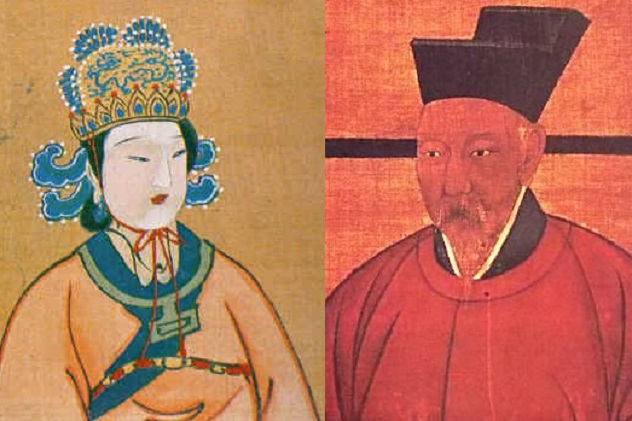
The Taizong emperor ruled China’s Tang dynasty for over two decades. During this time and for centuries to come, he was a revered figure not only among the Chinese but also the Japanese, Koreans, and even neighboring steppe tribes that were usually hostile toward the Middle Kingdom.
Upon his death in A.D. 649, the mandate passed to his son, Emperor Gaozong. One day, the new emperor passed a convent and met the gaze of a woman named Wu Zetian (sometimes known as Wu Zhao). She was a former junior concubine to the previous emperor and had once been a beautiful young lady, but her head was now shaven in the tradition which dictated that once an emperor dies, his concubines must shave their heads and spend the rest of the lives in a convent.
Undeterred by this, Emperor Gaozong bade her to come back to the palace and become his concubine as well. The scandalous nature of this quasi-incestuous relationship was not lost on the more conservative statesmen in China, and her arrival at the imperial palace was met with disdain. Other concubines vied for the emperor’s affection, but Wu Zetian outlasted them all, eventually being proclaimed Empress in 655.
As the emperor’s health deteriorated, Wu Zetian proved to be a shrewd and ambitious empress, becoming China’s de facto ruler. Gaozong allowed her to run the affairs of state in his name for the next few decades until his death in 683. Seven years later, Wu Zetian herself ascended to the throne without revolt, becoming China’s only female emperor.
Her rule, in Gaozong’s name and her own, was a glorious period in Chinese history. Government positions were earned by merit rather than birthright, peace and order prevailed, and women became more liberated. The empress even introduced some semblance of democracy to the Chinese government, openly seeking criticism and suggestions.
6Justinian And Theodora
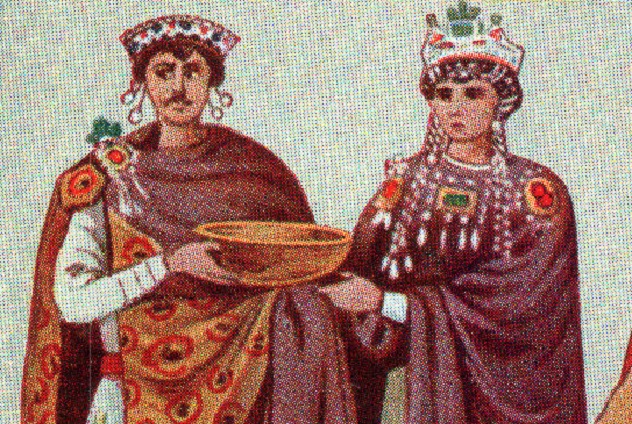
“Who was this woman, who had such control over the decisions of her husband?” asked the Greeks in Constantinople. They were referring to Theodora, wife of Emperor Justinian of the Byzantine Empire.
Justinian was an unpopular emperor at times—the high taxes he enforced, coupled with an outbreak of the plague that bore his name, served to unhinge the populace. It didn’t make matters easier that his wife was from the lower classes. She was brought up as the daughter of a bear trainer in a circus and later worked as a mime and an actress. It should be noted that being an actress was not as glamorous as it is today—being called an “actress” in those days was akin to being called a prostitute.
Nevertheless, she won the emperor’s heart, and the two married in A.D. 525. Theodora immediately set about ensuring the safety and rights of women in the empire, banning brothels, increasing rights to marriage and dowry, and even stopping pimps from making money off their prostitutes.
Still, tensions grew worse in the capital. During one riot on January 13, 532, the crowds in the Hippodrome began chanting “Nika!” meaning “victory” or “conquer.” Justinian scurried to his chambers, preparing to leave Constantinople and abdicate. When he looked back, he saw a determined Theodora, who informed him, “Never will I see the day when I am not saluted as empress.” Theodora’s stubbornness encouraged the emperor to stand his ground, and soon, the revolt was quashed. The Hagia Sophia, which was burned to the ground after the Nika Revolt, was rebuilt by Justinian as the majestic structure we see today in Istanbul.
5Baji Rao And Mastani
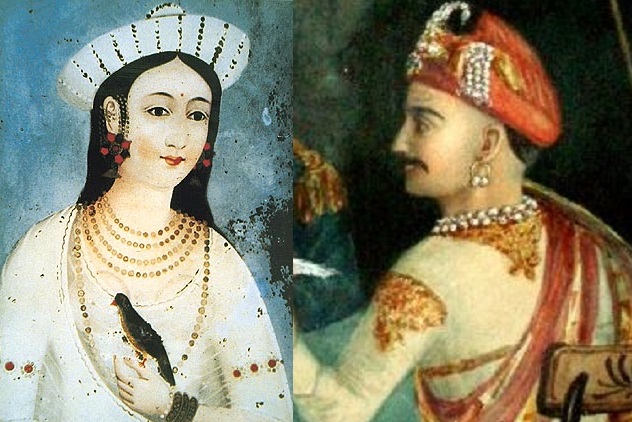
Very few in India’s rich history and culture have rivaled the love story of Shah Jahan and Mumtaz Mahal, which culminated in the creation of the Taj Mahal. What’s lesser known to people who don’t live in the country, however, is the story of the Mastani Mahal. Though it’s now only a reconstruction of its former self, it still bears the wishes of two people whose love transcended strict traditions and religion, one Hindu and the other Muslim.
Baji Rao I was a Hindu peshwa, the equivalent of a prime minister. The peshwa ruled the Maratha Confederacy, India’s last bastion of Hindu rule before it was taken over by the British. The Marathas achieved their zenith under Rao, an unyielding and highly skilled commander who was undefeated in multiple engagements.
Away from the field, however, he was a hopeless romantic. Though his marriage to Mastani, a beautiful and alluring Muslim woman, was met with criticism from his family and society in general, they were desperately in love. Even historians understated their romance, describing Mastani as simply a “Muslim dancing girl that influenced the peshwa.”
Rao’s family conspired to keep Mastani away from him whenever they could, partly out of jealousy and partly because of their conservative beliefs. According to historian Kusum Choppra, the constant separation drove Rao to drink, and upon learning of Mastani’s untimely death, he drank himself to his own early grave.
In 2009, miscreants dug up Mastani’s grave, perhaps hoping to discover hidden treasure. If there’s one thing that can heal centuries of hate and prejudice, though, it’s a good love story, and the area’s Hindus and Muslims united to protest the act.
4Giuseppe And Anita Garibaldi
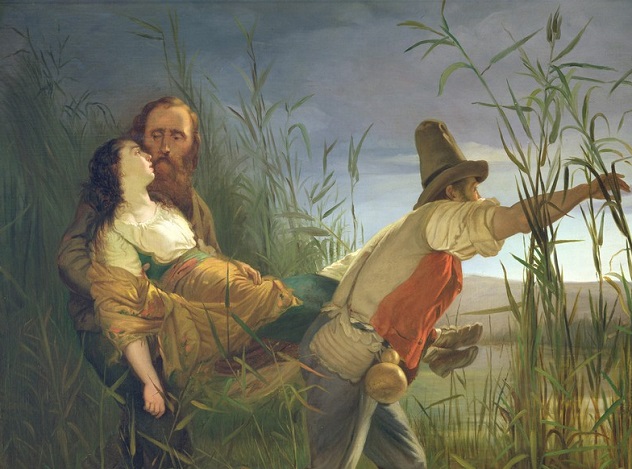
Giuseppe Garibaldi gained notoriety following a failed insurrection in Piedmont, Italy. Condemned to death, Garibaldi escaped to France and eventually Brazil. He volunteered as a naval captain for a small republic, which attempted to revolt against the Brazilian Empire.
It was during this time that he met Anita and became instantly enamored by her. Though she was already married, Anita’s husband was abusive, which made her decision to run away with Giuseppe an easy one. She accompanied her beloved on his revolutionary adventures, oftentimes in military engagements. Aboard Garibaldi’s ship, Anita even took up arms when they met a hostile vessel. Later on, she took care of the transport and nursing of the wounded rebels and even went on her own solitary travels in hostile territory. During one battle in July 1840, Anita led Giuseppe’s cavalry forces despite being eight months pregnant. Two years later, while the two were aiding Uruguayans against Argentina, Anita learned of her husband’s death. The couple immediately tied the knot.
In 1847, they sailed across the Atlantic back to France, where Giuseppe roused patriotic Italians to fight for unification. Anita aided him with the recruitment of men and the procurement of weapons. When the short-lived Roman Republic collapsed, Giuseppe and Anita led the volunteers in an arduous retreat from Rome. Tragedy struck on August 4, 1849, when Giuseppe’s ever-present partner and comrade-in-arms fell ill and died. Although Giuseppe Garibaldi would remarry and eventually become one of the founding fathers of Italy, Anita’s death grieved him until his dying day on June 2, 1882.
3Vladimir Lenin And Inessa Armand
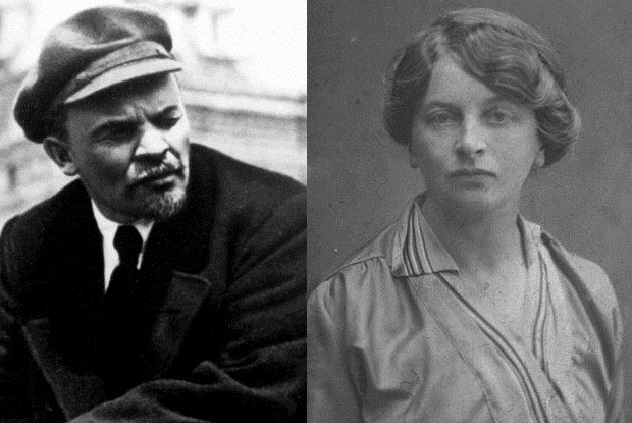
On April 16, 1917, Vladimir Lenin, the man who would overthrow Imperial Russia and bring forth the Soviet Union, alighted from a train in St. Petersburg. This “sealed train” allegedly carried $10 million in German funding for the revolution that would topple Czar Nicholas II’s government and bring the Russians to the negotiating table during World War I. Ironically, much of the funding for the Bolshevik Revolution actually came from capitalists on Wall Street.
Another passenger on this “sealed train” was Inessa Armand, Lenin’s mistress. Armand had been one of Lenin’s most ardent followers and lieutenants for many years. During Lenin’s exile, she was instrumental in garnering support for the Bolshevik cause and coordinating all related groups in Western Europe. She was a lover of music, especially the works of Beethoven, which Lenin also enjoyed. She was fluent in five languages, and Lenin trusted her to speak on his behalf in conferences with the likes of Rosa Luxemburg and Leon Trostky. Armand also advocated a greater role for women within Communist society.
Three years after they arrived in St. Petersburg, with Lenin now firmly holding the reins of power in Russia, Armand contracted cholera and died on September 24, 1920. Her death shocked Lenin to the core and may have hastened his own demise. It was said that during her lavish state funeral, Lenin “was unrecognizable . . . his body expressed so much sorrow and he seemed to have shrunk, his eyes drowned in tears.”
2Hernan Cortes And La Malinche
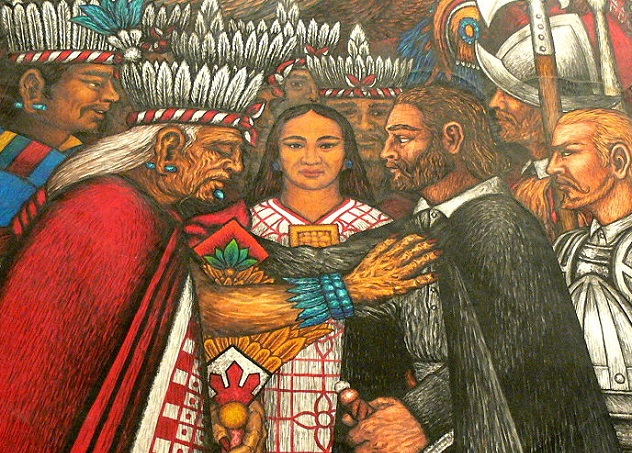
Many legends and tales surround the story of La Malinche and her love affair with the conquistador Hernan Cortes. One such tale involves La Malinche being mistaken for a goddess when an old woman pleaded her to remove a curse, pointing at a volcano on the horizon. La Malinche ran away, but the locals associated her with the superstition so closely that they named the volcano after her.
Her portrayal has differed vastly throughout centuries. One of the most poignant caricatures of La Malinche expressed by modern-day nationalists is as a seductress, a traitor who gave away the independence of the natives to a foreign power. What we do know is that she was one of the 27 women offered as tribute to the Spaniards after a local tribe was bested in battle. Cortes recognized La Malinche’s worth, for she was able to speak Mayan and Nahuatl, the dominant languages of the land.
As his interpreter, guide, and eventually, his lover, La Malinche aided Cortes in his various dealings with the natives, be it the solicitation of food, asking for directions, or even negotiating peace bargains and alliances. La Malinche was baptized and became known as Doña Marina. She gave birth to a son, Martin, one of the first mestizos (people of half-Spanish, half–Native American ancestry).
1Ferdinand And Isabella
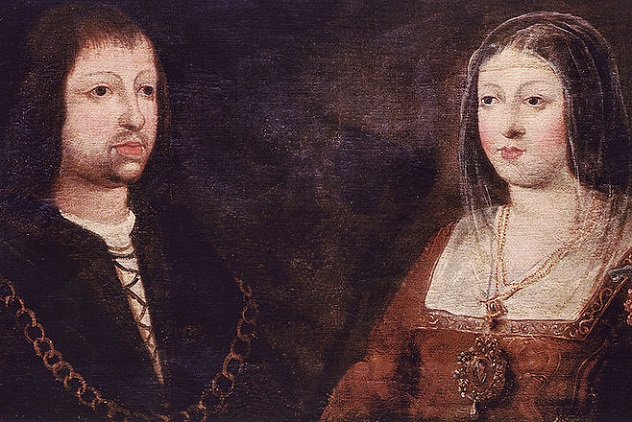
Isabella of Castile had never met Ferdinand of Aragon, but she heard that he was handsome, vibrant, and astute. Likewise, he had never seen her, but he had been told of her beauty, charm, and wit. They loved each other from afar, as Isabella’s half-brother, King Enrique IV of Castile, forbade the two from ever meeting. He planned to marry Isabella into the Portuguese or French nobility, but love found a way.
One day, the prince decided to meet his princess. To avoid detection, he disguised himself as a lowly merchant, while Isabella deceived King Enrique by telling him that she was to visit their brother’s crypt. When the two finally met, it was said that they talked for hours. Small talk led to an immediate wedding on October 19, 1469 in Valladolid.
At once, the king of Portugal—who had a claim to the Castilian throne—declared war against Isabella, but Ferdinand was by her side. He sent news of a massive Portuguese defeat that greatly demoralized their opponents, while Isabella personally rode out to negotiate with the rebels during a local revolt.
Isabella ascended to the throne of Castile, as did Ferdinand to the throne of Aragon. Their union saw the end of the Reconquista when the Muslim kingdom of Granada became a Christian dominion, securing their place in religion and history as “The Catholic Monarchs.” Their romance and marriage led to the unification of modern-day Spain, and the ensuing period of peace and prosperity attracted a certain Genoese explorer named Christopher Columbus.
When Columbus spoke of a westward journey to India, Ferdinand was initially unenthusiastic about the idea until Isabella gave Castile’s full support. The discovery of the New World filled Spain’s coffers, and Christianity spread from the cathedrals of Toledo to the villages of Mexico and Argentina to the shores of the Philippines half a world away. All of that was possible because a prince and princess decided to meet and make things work against all odds.
Jo’s great romance of five years has just ended. He’s writing a list based on historic love stories to somehow lessen the sadness. Poor guy. You can console him or share your own thoughts about the list in the comments section.








